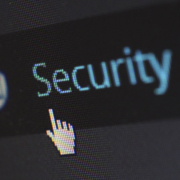Security Challenges in Remote Working
Introduction:
Whether or not the effects of COVID-19 in the UK could lead to school closures, city lockdowns and movement restrictions. The virus has identified the importance of business continuity planning and ensuring that your business and technology can flex with significant disruption.
For several organisations, it has become a top priority to encourage remote working. Although offices have undergone a deep clean, some businesses have already introduced remote working, while many businesses are quickly rolling out remote working for workers who need to separate themselves. A few UK businesses have gone further and told all workers to work where possible from home.
Although the focus of many articles on remote work and coronavirus has been on deploying cloud services, IT support will be an essential factor for a successful implementation once you have the resources to enable a virtual workplace.
What cyber threats might affect you while working remotely?
Many organisations allow employees to work from home as the strategy increases productivity and, among other benefits, provides more flexible schedules. However, working remotely introduces some cyber risks that threaten the cybersecurity posture of the organisation. Therefore, before implementing such a move to benefit from numerous benefits, each organisation must be aware of the various risks associated with remote operation approaches.
- The most obvious risk is that most of our activities are done online. After all, there is always the chance of a cybercriminal risking something on the internet.
- In most cases, a home setup with a network connection and devices used to access sensitive corporate data may have inadequate security. For example, there may be a lack of an in-depth security strategy, such as the use of VPNs, antivirus solutions, firewalls, and intrusion prevention systems that are used to protect an enterprise.
- Employees also use more than one device when operating from home to access sensitive information or for other work-related purposes. This complicates the efforts made to protect data because any device used is a possible entry point for system threats.
- Home interaction work is increasingly based on Internet access compared to an office environment in which workers use secure communication networks and intranets to communicate and exchange information. This is a significant risk since the public Internet is unsafe and sometimes full of malicious actors. The connection used may contain several flaws that may be compromised to allow cybercriminals to intercept every piece of data transmitted over a wide-area network.
How to maintain a secure Remote Working Environment?
How do you maintain security when employees work remotely and your team shifts to a remote workforce? As remote work is becoming a more prevalent trend in business and given the recent outbreak of COVID-19, there is no better time for employees and companies to make progress in securing remote work.
The main objective of this article is to inform employees and business management, both small and large, of the tools and steps available to them.
Implement a Cybersecurity Policy:
If your business allows remote work, you must have a clear cybersecurity policy in place to ensure that every employee has secure access to company data. Without a strategy in place, any employee can easily become an entry point for a hacker to hijack the network of your organisation.
To avoid this from happening, establish a cybersecurity strategy that sets out guidelines that comply with home or travel security protocols. Policies may include the intended use of approved encryption messaging systems, such as Signal or WhatsApp; upgrading and patching computer security schedules, such as antivirus or anti-malware updates; and protocols on remote system wiping when lost.
Increase your Cloud Security:
Businesses need to ensure that security is integrated into cloud environments from the outset and continually reassessed to meet evolving demands. By resolving these concerns, you will better prepare your security team and the rest of your staff for a move to remote work.
Developing a cloud security plan is not just a one-off job. As the underlying stack shifts, you’re likely to modify the approach as well. You need a centralised strategy that avoids fragmentation when cloud computing grows organically across different business lines. To serve remote workers from all departments, you need the same level of protection across the entire organisation.
Encryption:
A Cloud services technology scrambling data in such a way that only authorised parties can interpret the details. If a hacker breaks into a company cloud and discovers unencrypted data, he or she can do any number of malicious acts with the data: leak it, sell it, use it for more attacks, etc. However, if suppose the company’s data is encrypted. In that case, the intruder can only find scrambled data that can not be used until they somehow discover the decryption key (which should be virtually impossible). Encryption helps avoid data leakage and disclosure, even though other security measures fail.
Other best practices for maintaining Cyber Security:
- Establish a separate, external network dedicated to remote access only. If anything infects your server, it won’t spread to other areas of your network.
- Set up a site-to-site VPN connection or use a secure remote service.
- Keep your hardware and software maintained and tested, including remote devices for your employees.
- Enforce strong password policies and get employees to use a password manager.
- Set up session time on all teleworking links and automatic screen locks on all devices.
- Manually configure employees’ device firewalls and anti-malware / anti-virus apps.
- Add additional layers of protection authentication to company data on mobile devices.
- Consider offering company-owned equipment for workers to use that can be managed and protected by an in-house IT team or the MSP.
- Consider end-point detection and response or remote access logging to track what’s going on in your IT systems.
- Arrange a professional IT support team to help your employees resolve their technical issues on time; it will also avoid hackers from attempting major security breaches.
Conclusion:
Remote work has risen sharply in recent years, a growing trend that does not appear to slow down in the future. As a result, it is strongly recommended that all IT organisations start and integrate remote work into their strategies. It has already been shown that there are many advantages for businesses that use this technique, such as talent retention, efficiency, enhancing the work-life balance of workers, etc.
Remote work, however, has its security threats and other issues that companies need to overcome before beginning the implementation of this activity. In this case, The Tech Guru suggests that every company refine its security policies and procedures and detail on how to protect remote employees from possible cyber attacks and how to deal with circumstances where they arise. The Tech Guru provides a wide range of IT support and cloud services that can secure your remote business network









